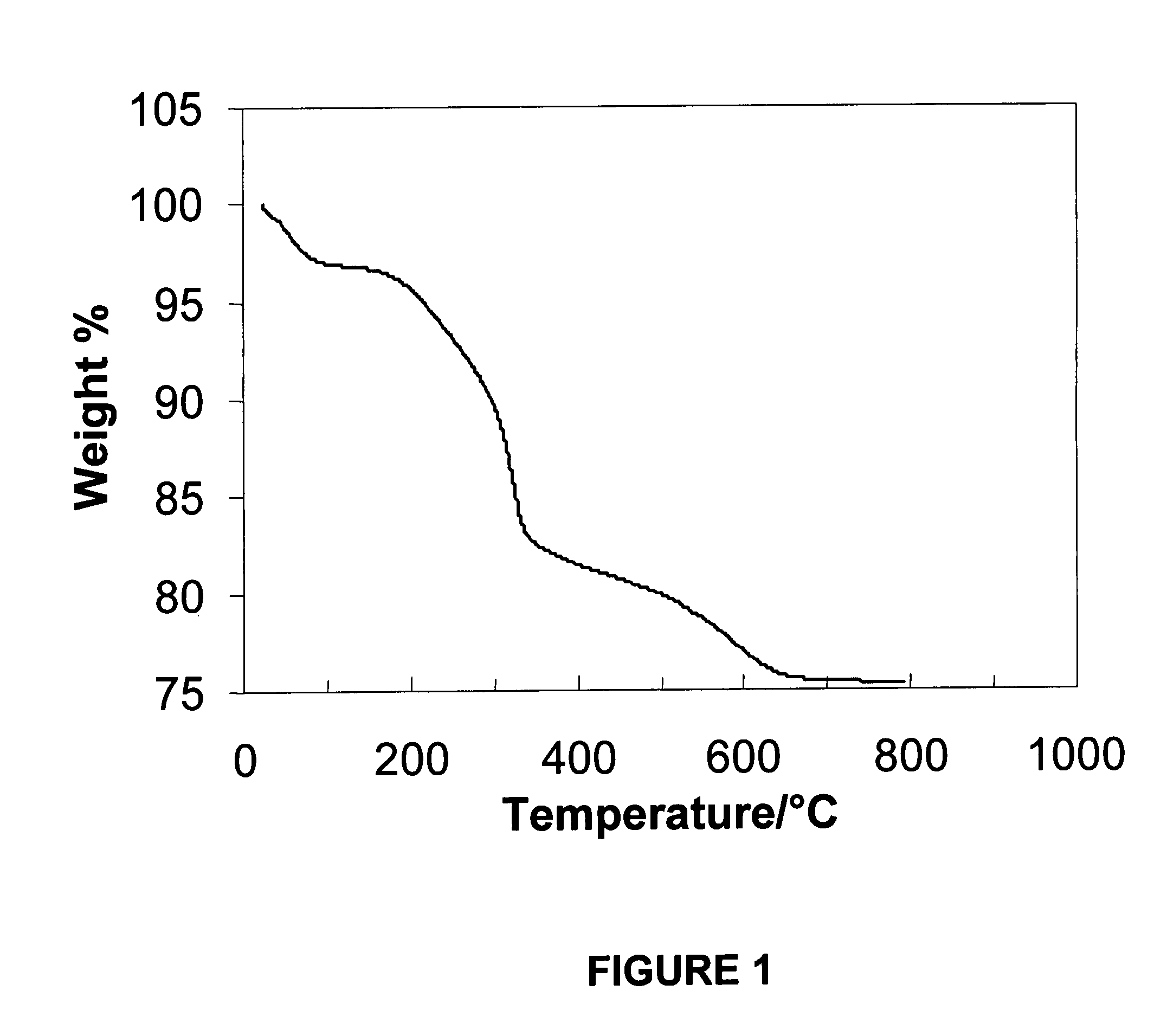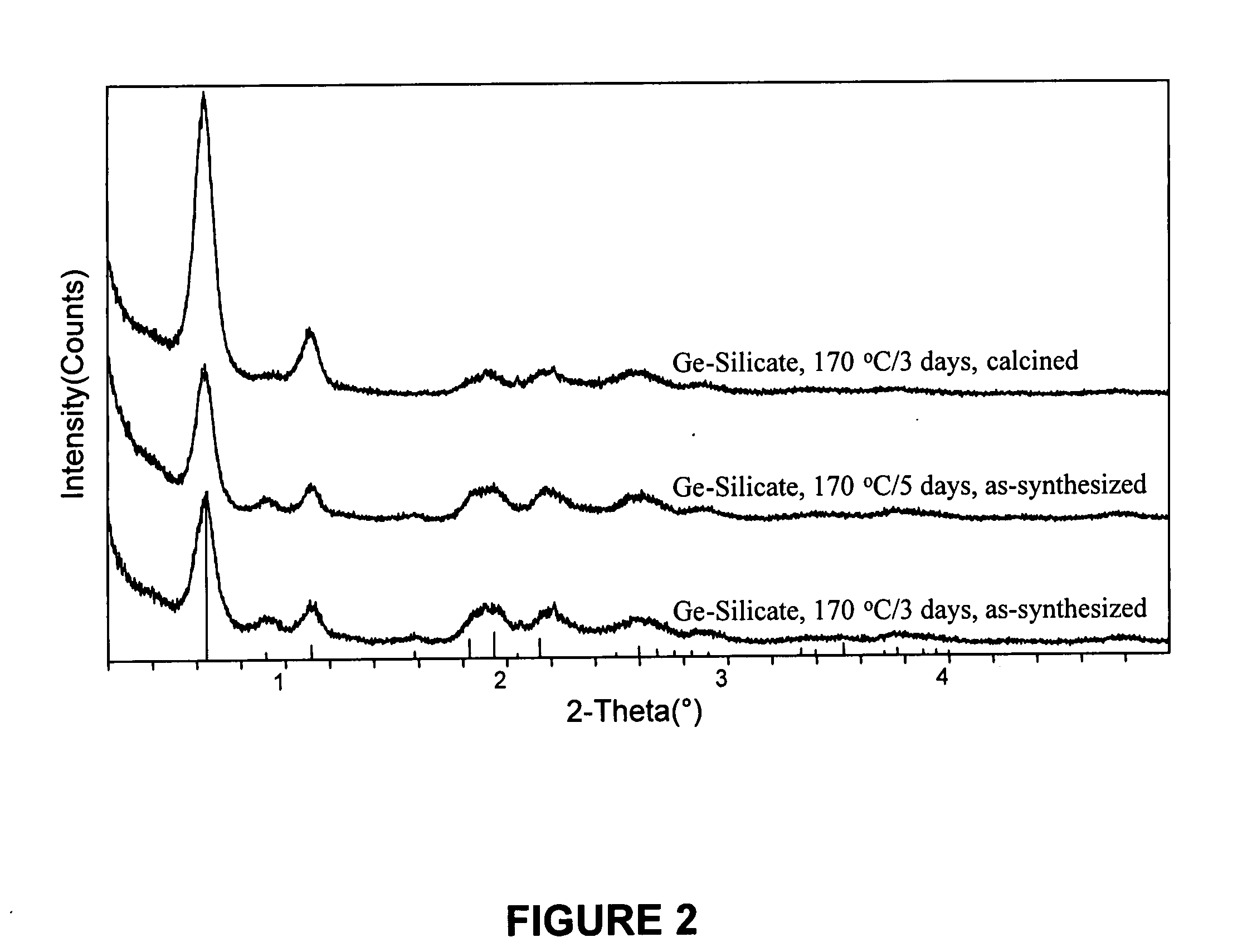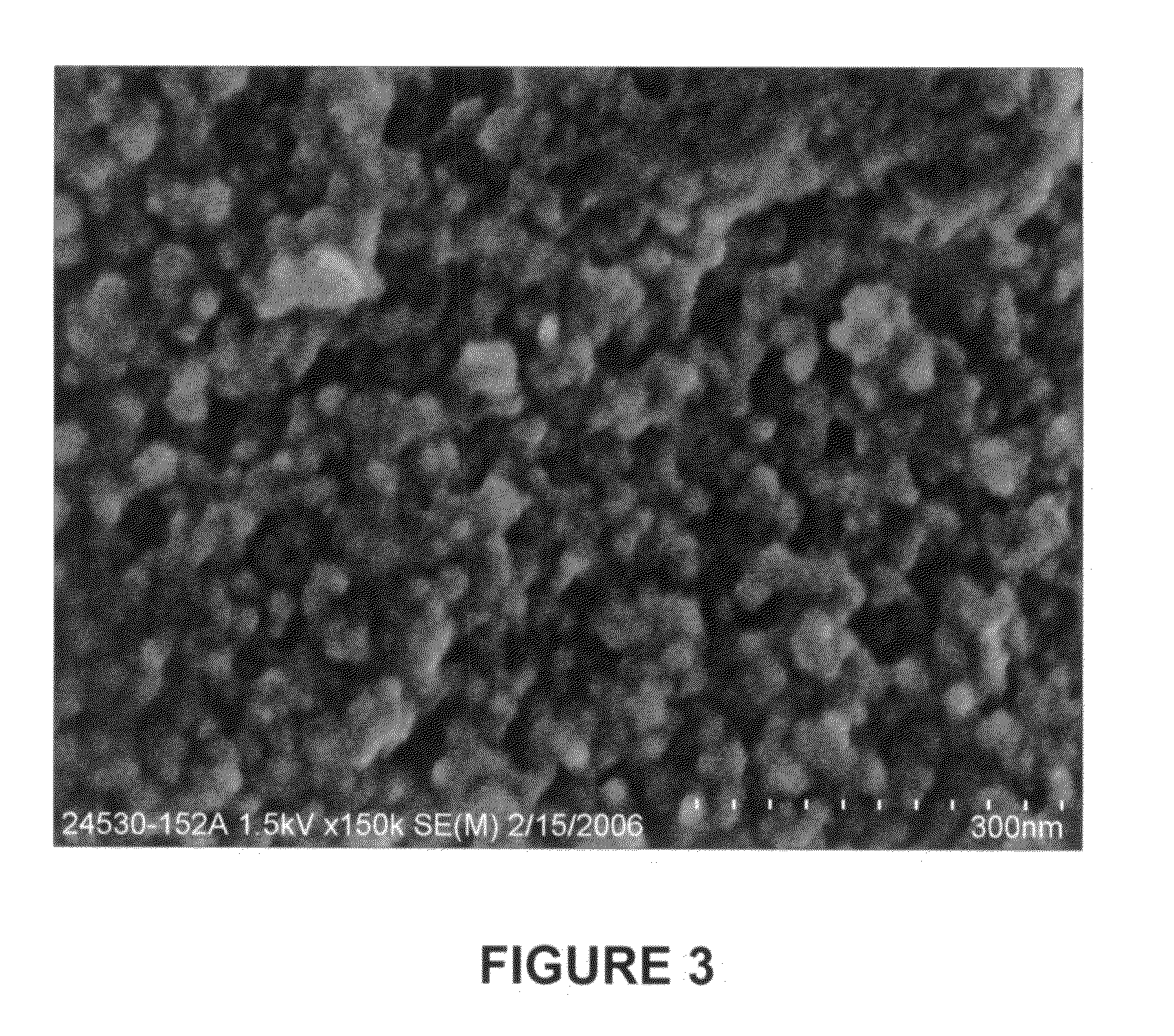Method of making porous crystalline materials
a technology of porous crystalline materials and crystalline materials, applied in the field of new methods, can solve the problems of unpredicable crystal structure that might be obtained from a given synthesis mixture with any given organic templating agent, and is not readily and conveniently available for commercial synthesis
- Summary
- Abstract
- Description
- Claims
- Application Information
AI Technical Summary
Benefits of technology
Problems solved by technology
Method used
Image
Examples
example 1
Synthesis of N,N-dimethyldicyclohexylammonium hydroxide (DMDCHA+OH−)
[0069]To a chilled solution of 100 g N-methyldicyclohexylamine (Aldrich) in 50 g ethanol was slowly added 30 g iodomethane (Aldrich). The mixture became lukewarm. To allow dissipation of heat, fifteen minutes were allowed to elapse while the mixture was chilled in an ice-bath before another 30 g iodomethane was added. A rapid release of heat ensued soon after, followed by crystal precipitation. After the mixture was chilled to ice-bath temperature, an additional 27.2 g iodomethane was added, and the mixture was shaken at room-temperature overnight. Large amounts of white crystals formed, which were recovered by decanting the mother liquor.
[0070]The crystals were dissolved in an adequate amount of deionized water and the solution was ion-exchanged with MTO-Dowex SBR LCNG OH Form Ion-Exchanger (Supelco) several times until the solution was tested negative for iodide with AgNO3. The solution was concentrated on a rotar...
example 2
[0071]10.42 g tetraethylorthosilicate (TEOS, 99% from Aldrich) was added to 19.86 g of a DMDCHA+OH− solution as prepared in Example 1. Then, 1.31 g amorphous germanium dioxide powder (99.99%, available from Aldrich) was added to the TEOS-DMDCHA+OH− mixture. The mixture was sealed in a polypropylene bottle and shaken for 24 hours at room temperature, after which a clear solution was obtained. A 48 wt % aqueous solution of hydrofluoric acid (1.33 g, available from Aldrich) was then added to the clear solution, which resulted in immediate precipitation. This slurry was homogenized by vigorous shaking, and was then poured into a plastic dish for water and ethanol evaporation at room temperature. A stream of nitrogen was directed toward the mixture to facilitate evaporation. The evaporation step was terminated once the weight of the mixture reached 15.0 g. This resulting mixture had the following composition:
0.5(DMDCHA+OH−):0.5HF:0.2 GeO2:0.8SiO2:5.0H2O
[0072]The mixture was divided into ...
example 3
[0080]The procedure of Example 2 was reproduced, except no germanium oxide was added. The synthesis mixture before hydrothermal synthesis was:
0.5(DMDCHA+OH−):0.5HF:1.0SiO2:5.0H2O
The mixtures were sealed in two Teflon lined 23-ml autoclaves, which were then heated at 170° C. for 3 and 5 days while being tumbled at 40 rpm. The products were recovered as described in Example 2. XRD analysis of the product indicated that the products had the BEA* framework type.
PUM
 Login to View More
Login to View More Abstract
Description
Claims
Application Information
 Login to View More
Login to View More - R&D
- Intellectual Property
- Life Sciences
- Materials
- Tech Scout
- Unparalleled Data Quality
- Higher Quality Content
- 60% Fewer Hallucinations
Browse by: Latest US Patents, China's latest patents, Technical Efficacy Thesaurus, Application Domain, Technology Topic, Popular Technical Reports.
© 2025 PatSnap. All rights reserved.Legal|Privacy policy|Modern Slavery Act Transparency Statement|Sitemap|About US| Contact US: help@patsnap.com



